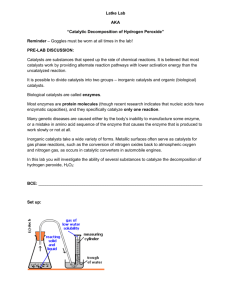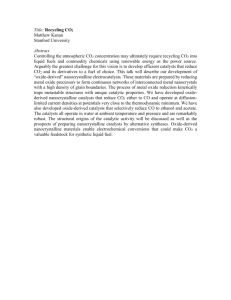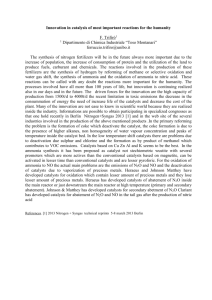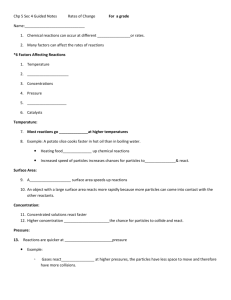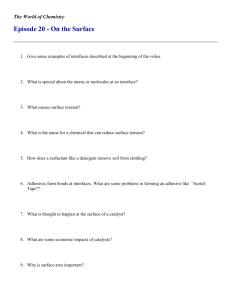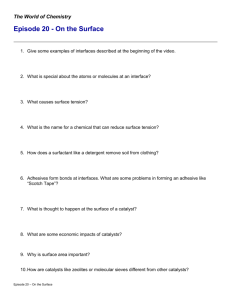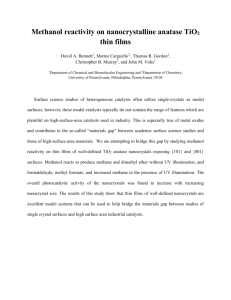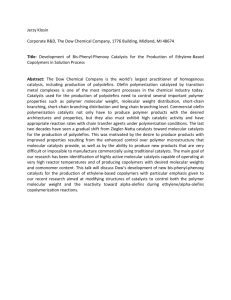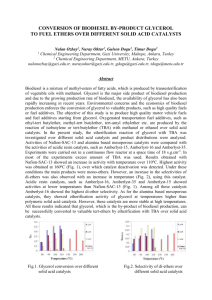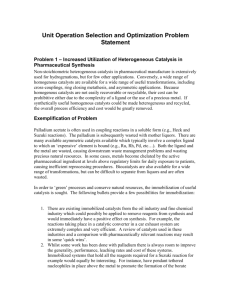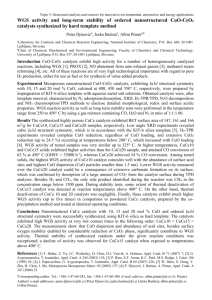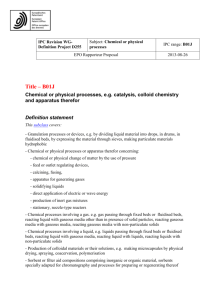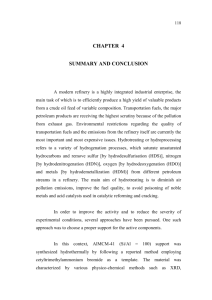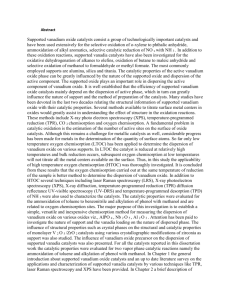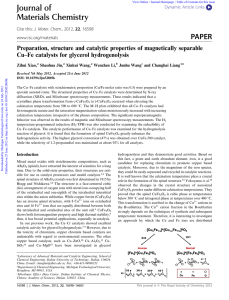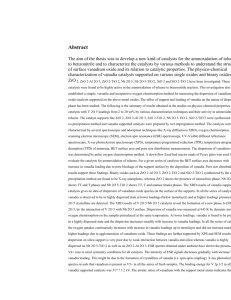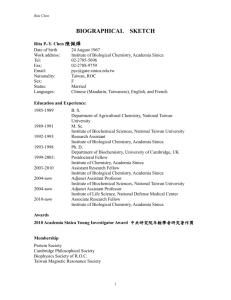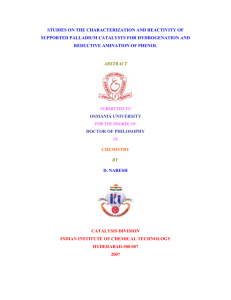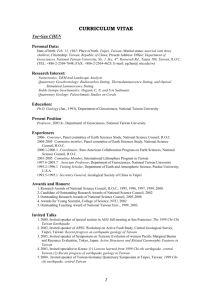Characterization of Nano-sized Pt–Ru/C bi
advertisement
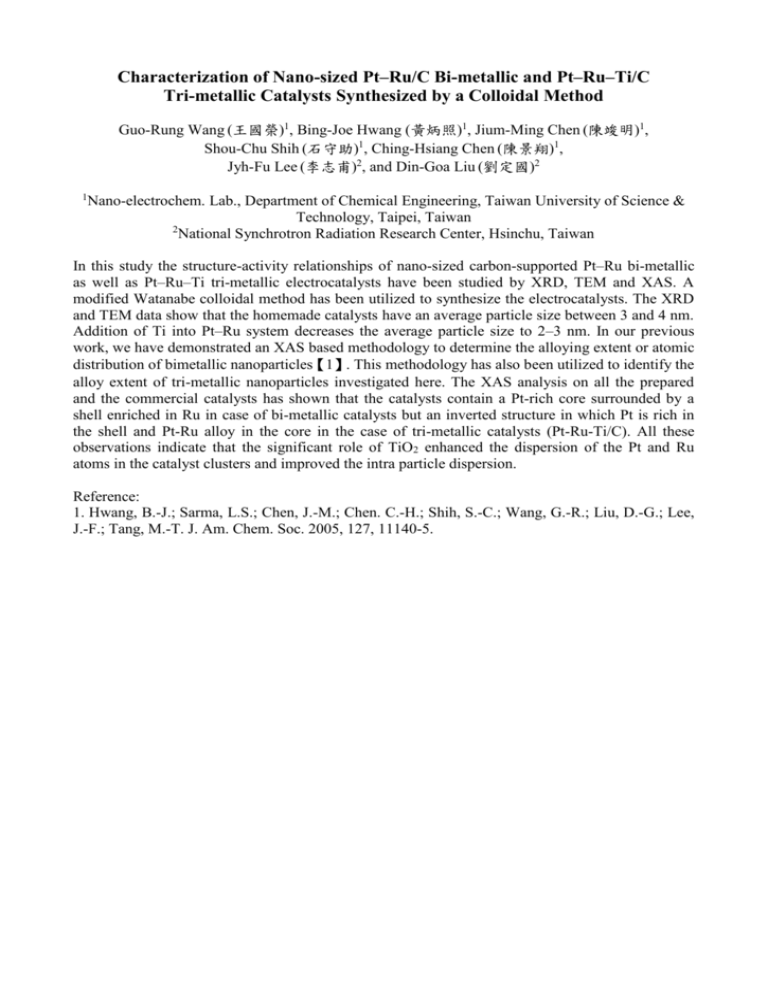
Characterization of Nano-sized Pt–Ru/C Bi-metallic and Pt–Ru–Ti/C Tri-metallic Catalysts Synthesized by a Colloidal Method Guo-Rung Wang (王國榮)1, Bing-Joe Hwang (黃炳照)1, Jium-Ming Chen (陳竣明)1, Shou-Chu Shih (石守助)1, Ching-Hsiang Chen (陳景翔)1, Jyh-Fu Lee (李志甫)2, and Din-Goa Liu (劉定國)2 1 Nano-electrochem. Lab., Department of Chemical Engineering, Taiwan University of Science & Technology, Taipei, Taiwan 2 National Synchrotron Radiation Research Center, Hsinchu, Taiwan In this study the structure-activity relationships of nano-sized carbon-supported Pt–Ru bi-metallic as well as Pt–Ru–Ti tri-metallic electrocatalysts have been studied by XRD, TEM and XAS. A modified Watanabe colloidal method has been utilized to synthesize the electrocatalysts. The XRD and TEM data show that the homemade catalysts have an average particle size between 3 and 4 nm. Addition of Ti into Pt–Ru system decreases the average particle size to 2–3 nm. In our previous work, we have demonstrated an XAS based methodology to determine the alloying extent or atomic distribution of bimetallic nanoparticles【1】. This methodology has also been utilized to identify the alloy extent of tri-metallic nanoparticles investigated here. The XAS analysis on all the prepared and the commercial catalysts has shown that the catalysts contain a Pt-rich core surrounded by a shell enriched in Ru in case of bi-metallic catalysts but an inverted structure in which Pt is rich in the shell and Pt-Ru alloy in the core in the case of tri-metallic catalysts (Pt-Ru-Ti/C). All these observations indicate that the significant role of TiO2 enhanced the dispersion of the Pt and Ru atoms in the catalyst clusters and improved the intra particle dispersion. Reference: 1. Hwang, B.-J.; Sarma, L.S.; Chen, J.-M.; Chen. C.-H.; Shih, S.-C.; Wang, G.-R.; Liu, D.-G.; Lee, J.-F.; Tang, M.-T. J. Am. Chem. Soc. 2005, 127, 11140-5.


